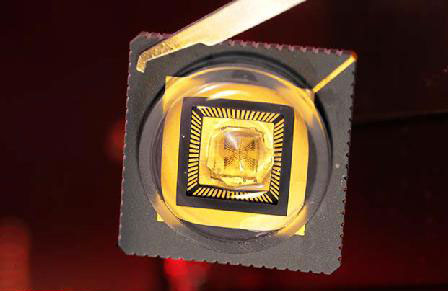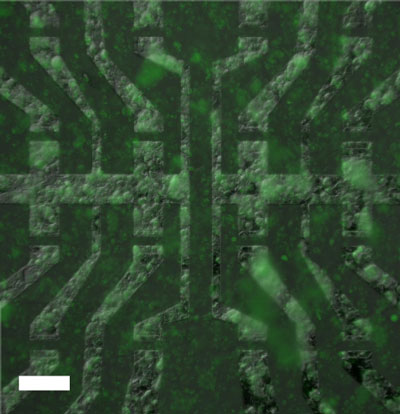As you see from the blogs here, nanotechnology, neuroscience, electronics and hi-tech materials are already replacing whole limbs and organs in a fast developing field of science
By the end of the year researchers will try out the first bionic eye implant in the UK hoping to help a blind patient see for the first time.
Check out this cool BBC news interactive page for a rundown of what's going on/
We've been cramming more intricate engineering into our bodies than you might think. For more on this fascinating subject, check out The Bionic Body Shop
Lightning seed: Tough, relentless cyberpunk action.
In an icebound future, fanatics with an dangerously unstable, climate transforming WMD, plan to fix the weather and save the world. The only person with the disarm codes has amnesia. It's down to a war-weary veteran to keep him alive in a deadly chase across a haunted America to reach the bomb
Kindle: http://bit.ly/LS-US
Google http://bit.ly/LS-CT
I write Scifi. I've moved the blog to http://www.softmachine.net You'll find all the new stuff there @NathanMcGrathSF. Nathan.
Monday 5 March 2012
Prosthetics controlled like real limbs
 |
| Major advances in neuroscience could lead to a wider range of brain-controlled prosthetic limbs that can restore mobility for people. (Credit: © ktsdesign / Fotolia) |
Their new study, published March 4 in the advanced online publication of the journal Nature, shows that through a process called plasticity, parts of the brain can be trained to do something they normally do not do; like controlling a prosthetic limb for example.
The new study advances work by researchers who have been studying the brain circuits used in natural movement in order to mimic them for the development of prosthetic devices.
"What we hope is that our new insights into the brain's wiring will lead to a wider range of better prostheses that feel as close to natural as possible," said Jose Carmena, UC Berkeley associate professor of electrical engineering, cognitive science and neuroscience.
Full Story at Science Daily 04-03-2012
Sunday 4 March 2012
Solar Flare could frazzle world's circuits.
 |
| Solar flares (credit: SOHO/NASA/ESA) |
The Earth has a roughly 12 percent chance of experiencing an enormous megaflare erupting from the sun in the next decade, according to space physicist Pete Riley, senior scientist at Predictive Science in San Diego, California, writing n Space Weather on Feb. 23.
This event could potentially cause trillions of dollars’ worth of damage and take up to a decade to recover from, according to a 2008 report from the National Research Council.
The last gigantic solar storm, known as the Carrington Event, occurred more than 150 years ago and was the most powerful such event in recorded history.
Ref.: Pete Riley, On the probability of occurrence of extreme space weather events. Space Weather, 2012 [DOI: 10.1029/2011SW000734] (Source: Kurzweil)
Project HAARP. Brollies will be useless against this threat
US Military working on Weather control?
HAARP began in 1990 and is funded by the Office of Naval Research jointly with the Air Force Research Laboratory. Its official purpose is to "analyze the ionosphere and investigate the potential for developing ionospheric enhancement technology for radio communications and surveillance purposes."
This invention has a phenomenal variety of possible ramifications and potential future developments. As alluded to earlier, missile or aircraft destruction, deflection, or confusion could result. particularly when relativistic particles are employed. Also. large regions of the atmosphere could be lifted to an unexpectedly high altitude so that missiles encounter unexpected and unplanned drag forces with resultant destruction or deflection of same. Weather modification is possible by, for example, altering upper atmosphere wind patterns or altering solar absorption patterns by constructing one or more plumes of atmospheric particles which will act as a lens or focusing device.
Read More on Project HAARP
HAARP began in 1990 and is funded by the Office of Naval Research jointly with the Air Force Research Laboratory. Its official purpose is to "analyze the ionosphere and investigate the potential for developing ionospheric enhancement technology for radio communications and surveillance purposes."
This invention has a phenomenal variety of possible ramifications and potential future developments. As alluded to earlier, missile or aircraft destruction, deflection, or confusion could result. particularly when relativistic particles are employed. Also. large regions of the atmosphere could be lifted to an unexpectedly high altitude so that missiles encounter unexpected and unplanned drag forces with resultant destruction or deflection of same. Weather modification is possible by, for example, altering upper atmosphere wind patterns or altering solar absorption patterns by constructing one or more plumes of atmospheric particles which will act as a lens or focusing device.
Read More on Project HAARP
Saturday 3 March 2012
Neural implants to replace damaged sensory cells
 |
| Biocompatible chips made of graphene. |
(Nanowerk News) In the future, neural implants could replace destroyed sensory cells in the eye or ear – a dream come true for humanity.
One of the greatest challenges yet to be addressed is designing the interface between medical technology and human tissue.
In order to overcome the limitations of existing models, scientists from Forschungszentrum Juelich and eleven other institutions involved in the NeuroCare project, which kicked off on 1 March 2012, will develop novel biointerfaces made of carbon.
If you are a regular visitor to this blog, you will know nanoparticles can be absorbed by the body through the skin or via ingestion as part of foods where nanotechnology is part of of the production process.
You will also have read about nanoscale wireless communication.
It is a commonly held rule that technologies converge and it takes little imagination to consider the dangers of neuro and nanotechnology convergence.
The world of Alister Cloud is one possible future where these convergences have already taken place.
Set in a society where governments depend upon ruthless Private Military Companies willing to use any technological advantage to retain contracts and control, the book explores the darker side of today's emerging technologies.
 |
| At the end of 2011, researchers from Forschungszentrum Jülich and Technische Universität München grew cardiac cells on a graphene transistor. |
Thursday 1 March 2012
The Greeks, the riots, the dog.
One committed protester has been at the front line of Greece protests for years.
The dog, thought to be a stray called Loukanikos, or Sausage, has become both a symbol and inspiration for Greek protesters, showing no fear, always in the action, constantly barking down police.
Anonymous take down Interpol Website

The Guardian Reports the following
"Interpol's website appears to have been the victim of a cyber-attack after the international police agency announced the arrests of 25 suspected members of the hacking activist group Anonymous in Europe and South America.
The website went down briefly on Tuesday as supporters of Anonymous made online claims that it had been targeted following the arrests in Argentina, Chile, Colombia and Spain. It was quickly back up and running but was loading slowly."Full story on the >Jump Here<
Get involved in the Public Consultation on Neurotechnology
 |
| From Nuffield Council on Bioethics website |
Recent developments in Neurology, computing and nanotechnology have led to methods of enabling the brain to directly control computers and thereby machinery; computers that can translate or 'read' thoughts, methods of influencing our thoughts and emotions.
As a result, the Nuffield Council on Bioethics has launched a public consultation on the ethics of the technology. Download the consultation doc and give your feedback. You don't need to be an academic or researcher to tell them what you think of the emerging technologies and if you would use them should the need or opportunity arise. Go on, get involved. You can download the consultation paper from the link on the Nuffield Council on Bioethics page
 |
| Image from BBC News |
"Hopes of curing terrible diseases, and fears about the consequences of trying to enhance human capability beyond what is normally possible.
"These challenge us to think carefully about fundamental questions to do with the brain: what makes us human, what makes us an individual, and how and why do we think and behave in the way we do."
For More information and to contribute to the consultation, go to the Nuffield Council on Bioethics page here
Subscribe to:
Posts (Atom)


